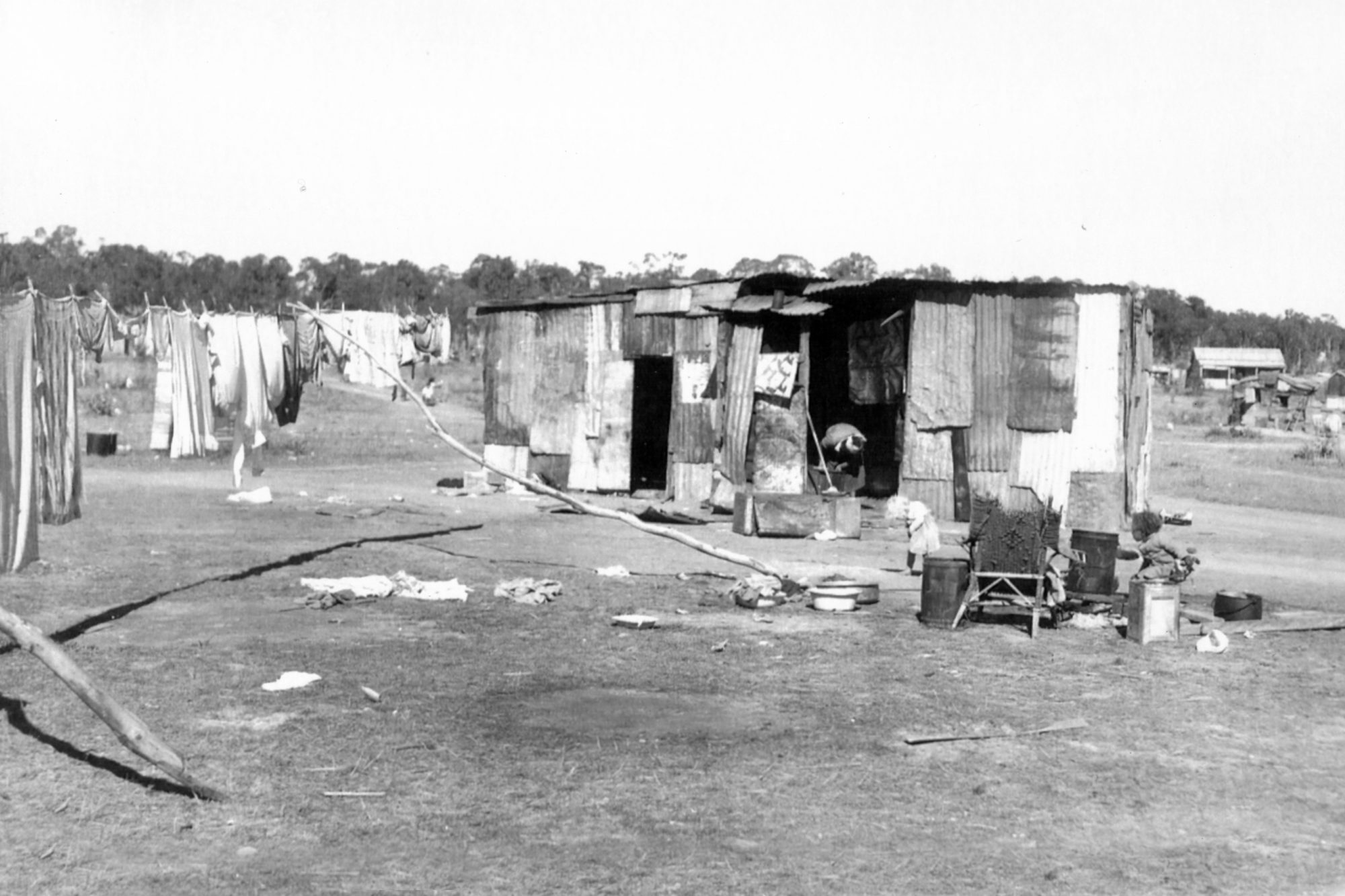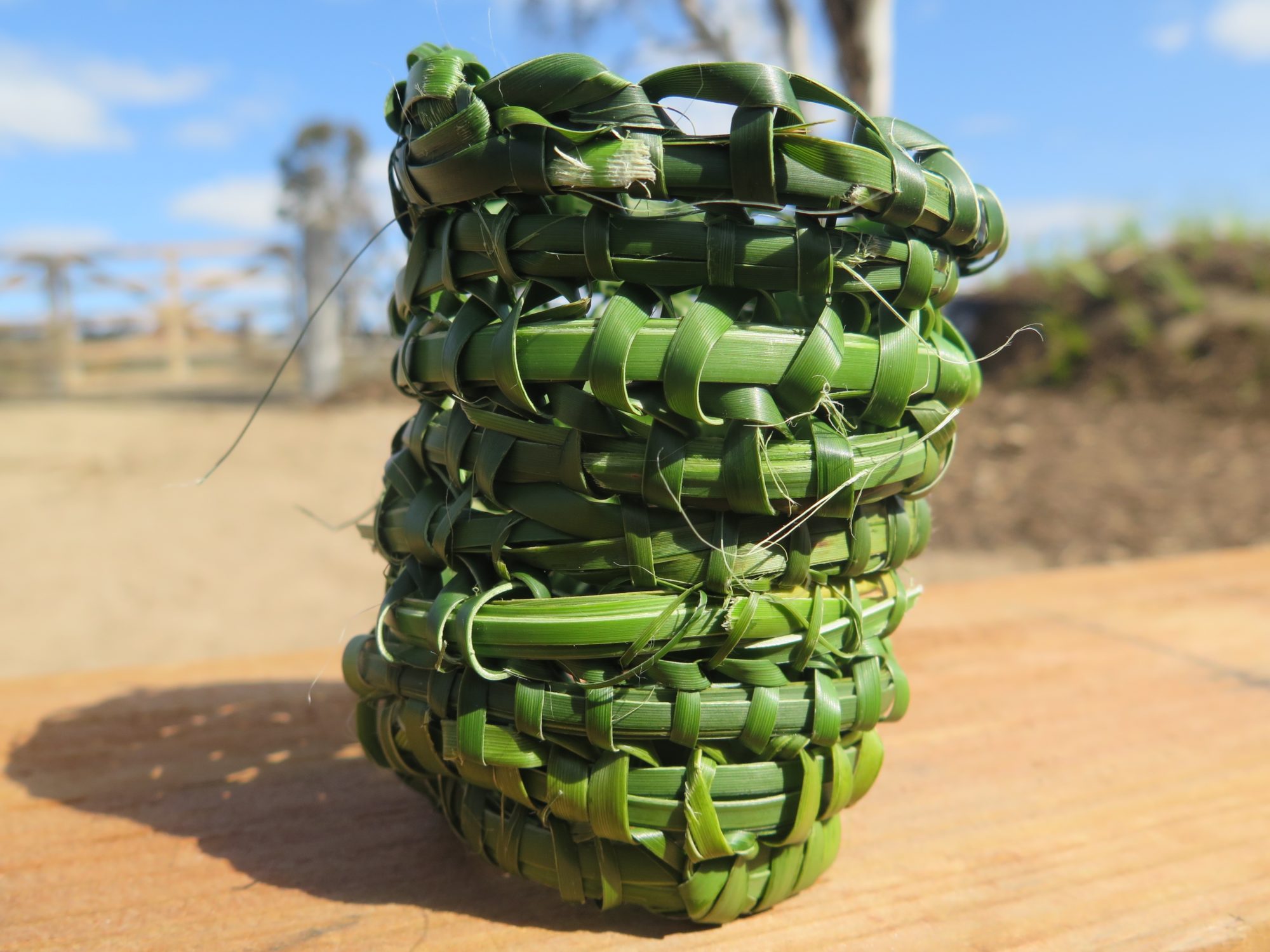Iwata
Iwata
More-than-human decolonisation in a community garden
For the past three years I have been immersed in a postdoctoral research project that has involved collaborating with Aboriginal people to design and cultivate a community garden on a site that used to be part of the East Armidale Aboriginal Reserve, NSW.
The East Armidale Aboriginal Reserve was established in November 1958, after over 100 dispossessed Aboriginal people had settled on the outskirts of the Armidale township, next to the town rubbish dump, in an attempt to glean whatever materials they could to shelter from the bitterly cold winters.

Image: Permission granted by Uncle Richard Vale
From the outset my commitment to the community garden project has been an intensely personal one. The community garden is in my hometown (it is about 500 metres from where I went to primary school), and yet, growing up, I never learned anything about the Aboriginal Reserve’s history. As Elders shared with me intimate accounts of their childhoods spent on the Reserve, filled with profoundly moving experiences of racism and dispossession, it forced me to confront the deeply uncomfortable fact that my places of intimate habitation, the places where I grew to understand myself and the world, are scarred by a genocidal and ecocidal past. As I listened to Elders describe being forbidden from speaking language, scavenging material for tin humpies from the white peoples’ rubbish dump to create shelter from below-freezing winters, and childhood memories of hiding from the Welfare board so they wouldn’t be stolen, my physical response, my profoundly affected body, drew me into a new relationship of responsibility. I felt for the first time that I had lived my life on stolen land. I had known that for a long time, but now I felt it.
Aboriginal Reserves and Missions were established across Australia to confine and control Aboriginal people. Within these segregated sites the speaking of ancestral languages, Aboriginal cultural practices, and the hunting of traditional foods were banned. At the East Armidale Aboriginal Reserve, the colonial ‘rubbishing’ of Aboriginal culture was accompanied by a rubbishing of the environment, with the toxicity of the surrounding garbage dump contributing to the appalling living conditions at the Reserve, leading to many preventable deaths in the community.
We are living in the midst of an environmental crisis that is inextricably tied to troubling histories of colonial violence. Questions of environmental recuperation in this era are therefore fundamentally entangled with issues of social justice and decolonisation.
The community garden is a site of Indigenous environmental and cultural rehabilitation, revival and reclamation. The garden brings people, plants and nonhuman critters together, creating an alternative space where anti-colonial stories about the past, present and future can be told.

Image: Kate Wright
In 2015, the community garden welcomed a new inhabitant – “Iwata”, a living sculpture of an echidna. Iwata is the Anaiwan name for echidna, and the echidna is the Anaiwan totem. Iwata changed my relationship to the community garden, and she continues to be a generative force in my own, and perhaps in other community garden visitors’, thinking.
The sculpture is the result of a community arts project in which local artist Jeremy Rudge worked together with Aboriginal high school and primary school students to create an echidna with spikes that are made of lomandra grasses, traditionally used in weaving, and a body that is composed of living soil – a multiplicity of minerals coalescing with organic fragments of the bodies of the living and the dead. As a manifestation of connectivity and healing, Iwata articulates the more-than-human alliances that are forming in the community garden, and brings with her a feeling of warmth and cultural safety.
Iwata is ancient and immanent, she is ancestral but created by the young. She is alive, but she is not singular. She is a heaving multitemporal sea of becomings and she is a focal point for visitors the community garden to begin to encounter the incommensurate belonging of Aboriginal people to this land.
I find myself unable to enter the garden without saying hello to Iwata. And I am incredibly proud of my ability to help cultivate and sustain her. As I continue to strive to decolonise my thinking and my life, Iwata is a guiding force – a teacher for how I might learn to live well in the ruins of capitalism and colonialism, and how I can help heal this wounded place. As her spikes continue to grow, my labour and the labour of my friends and colleagues weaves our lives into this pocket of land, like a basket made of lomandra grasses. And Iwata is growing alongside us, and our garden. In a minoritarian, material language she grounds our experimental hopes in the earth, enunciating our commitments to community and Country.
Kate Wright is a postdoctoral research fellow at the University of New England.

